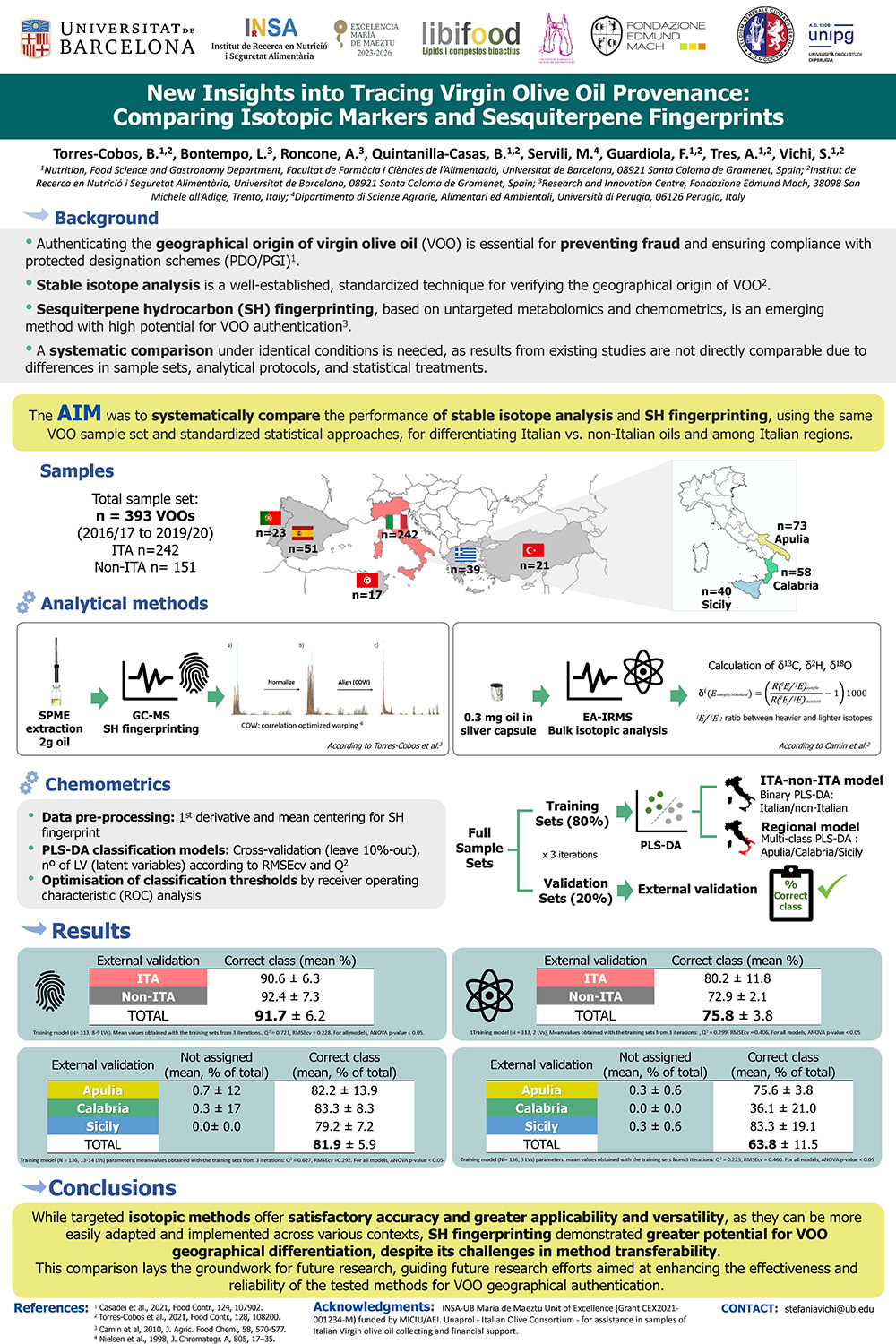This study presents a pioneering comparison of stable isotope ratio analysis and sesquiterpene (SH) fingerprinting for authenticating the geographical origin of virgin olive oil (VOO). The analysis, conducted on nearly 400 VOO samples from various harvest years, cultivars, and producers, utilized Partial Least Squares-Discriminant Analysis (PLS-DA) to differentiate between Italian and non-Italian VOOs, as well as to distinguish VOOs from three closely located Italian regions. Isotopic analysis using δ 13C, δ 18O, and δ 2H achieved over 75% accuracy in distinguishing Italian from non-Italian VOOs, while SH fingerprinting outperformed with over 90% accuracy and greater sensitivity to regional differences, as confirmed by external validation.
While targeted isotopic methods offer satisfactory accuracy and greater applicability and versatility, as they can be more easily adapted and implemented across various contexts, SH fingerprinting demonstrated greater potential for VOO geographical differentiation, despite its challenges in method transferability. This comparison lays the groundwork for future research, guiding future research efforts aimed at enhancing the effectiveness and reliability of the tested methods for VOO geographical authentication.
